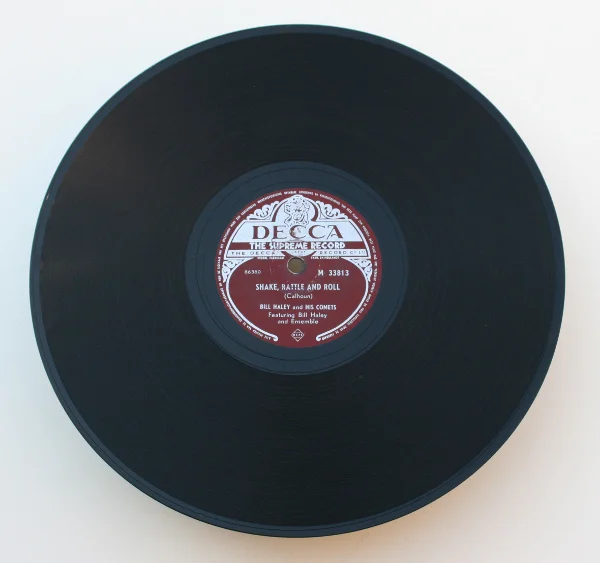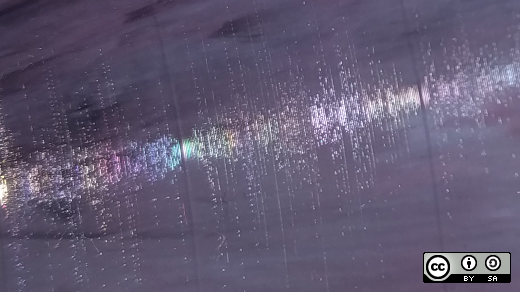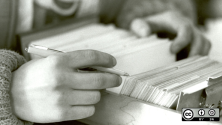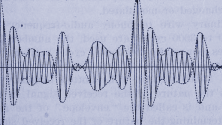A few weeks ago, a friend sent me a link to the Great 78 Project, "a community project for the preservation, research, and discovery of 78 rpm records." The project is supported by the Internet Archive, George Blood, and the Archive of Contemporary Music. Its purpose, first and foremost, is to convert old recordings into digital audio to preserve those historic performances for future listeners. Currently it's working to digitize the 200,000 or so 78 rpm records it has collected, and it's actively looking for contributions to add to its collection.
I think this is an exciting project that should be of interest to anyone who enjoys exploring music—and especially those involved in the open community. In this article, I'll look at a few things you may want to know about the project.
What is a 78 rpm record and why digitize it?
The Wikipedia article on the gramophone record provides a good introduction to this type of media. First things first for younger readers: An audio record generally can be defined as a flat, circular medium with a spiral groove cut into it to modulate an audio signal. A pickup device (e.g., a needle or stylus) "reads" the modulated music from the groove and passes that signal on for amplification; however, 78 rpm records are a specific type of record whose music was recorded, and therefore meant to be played back, by turning the record at 78 revolutions per minute (rpm).
A 1936 spring-motor-driven 78 rpm acoustic gramophone. Zecas, CC BY-SA 3.0, via Wikimedia Commons.
Beginning in the 1800s, the earliest 78s were recorded and played back acoustically, often with a hand crank to spin the record and a horn to amplify the sound. By the 1920s, record cutting and playback were generally handled by electronics. To create a record, sound was converted to an electronic format that drove the cutting amplifier and cutting head. At the playback end, a stylus scanned the groove and its motion was converted back into electrical form, amplified, and played back over a loudspeaker.
In a broad form, the vinyl LP records sold today are not all that different from these 78s; however, there are specific differences worth noting:
- The 78s turn faster than the 331/3 or 45 rpm vinyl LP records that later became the most common format.
- Given their standard diameter of 10 inches, 78s typically had less than four minutes of music on each side of the record. This is about the same amount of music as a 7-inch 45 rpm single and about one-fourth as much as a 12-inch 331/3 rpm album.
- Early 78s were almost universally made of shellac, a kind of natural resin, and pulverized rock. This mixture meant that 78s were typically fairly abrasive and therefore somewhat noisy. Later 78s had less mineral content and are therefore quieter.
- The groove in the 78 rpm record is typically quite a bit wider than that on 331/3 or 45 rpm vinyl records, requiring a broader profile for the pickup device.
- The 78 rpm record is typically monaural (i.e., it contains only one channel of music).
Vinyl records have a number of advantages over 78s—notably, they contain more music, have less background noise, and provide pickup devices a much longer lifetime. Generalizing and saying that vinyl records sound better than 78s is probably fair because the recording and playback chain are typically more accurate. A major disadvantage of 78 rpm records is that they are fragile and can crumble into dust.
The 78s that still exist present music that was recorded long ago—in some cases more than a century. The songs on them are mostly unknown today, and few of the artists who recorded on 78s are still alive. Moreover, music on 78s reflects the style that music was recorded and played at the time and is engineered differently from modern recordings.

opensource.com
Is it legal to digitize this stuff and make it available?
The business of copying music from one medium to another is complex because of different laws that govern the process. The United States has both state and federal copyright laws that control the copying and enjoyment of reproduced music. Other countries have similar laws.
In many countries (but not, for example, the United Kingdom), an individual can make a copy of a purchased work for private, individual use without violating copyright law; however, the Great 78 Project is not only copying these old records, but making them available in digital format to interested listeners. Are they not breaking the law?
The project's About page addresses this issue:
"This collection has been made available for use in research, teaching, and private study only. Copyrights that may exist in these materials have not been transferred to the Internet Archive. The Internet Archive does not advise as to the copyright status of items in our collections."
I am not a copyright expert, but it seems to me that, depending where they live, an individual may be breaking local copyright law by listening to or downloading the tracks available on this site. Therefore learning more about copyright laws in your jurisdiction before use is a good idea.
How can an individual use these digital copies?
More than 30,000 digitized songs are available to browse, select, and listen on the project's Listen page. I immediately spotted "House of the Rising Sun" performed by Josh White and his Guitar, which dates to 1942. I'm pretty sure this was the first blues number I learned to play on the guitar, back in... hmm... maybe it was 1965? Of course I had to give this a listen.
Wow, what a great performance! Aside from that, the site offers a scan of the label, a nice bio of Josh White, technical details on the transfer (this would be a good moment to thank George Blood for doing this work), as well as the option to download the track in various formats, including 24-bit FLAC. (Yay!)
Yes, it's noisy; yes, the frequency range is limited. And yes, this is a raw recording—we hear Josh without today's usual engineering and post-production work. No, Josh didn't record this in New Orleans and then have Lady Gaga do overdubs in New York.
What's with the different versions?
There are nine versions of this song on the site, and one is recommended by the engineer who made the transfers. This is typical of the recordings available in this archive. Each version was transfered with a different stylus and different equalization parameters. Huh? Well, reading closely we see that they tried four different stylii, each of a different size and shape. Also, the electrical signal generated by the stylus and cartridge was digitized without adjustment and to adjust for the way cartridge response varies with frequency and velocity.
It seems that such standards were somewhat loose back in the day, which requires some effort on the listener's part to find the right combination to generate a good playback.
Can you help?
The Great 78 Project is a wonderful effort to preserve early recordings that will otherwise eventually disappear as people run out of space to store the original material, means to play it back, and interest in the complexities of listening to these recordings.
If you have a box of 78s stored in your home, think about getting in touch with the Great 78 Project to see whether they would like to acquire this material.







6 Comments